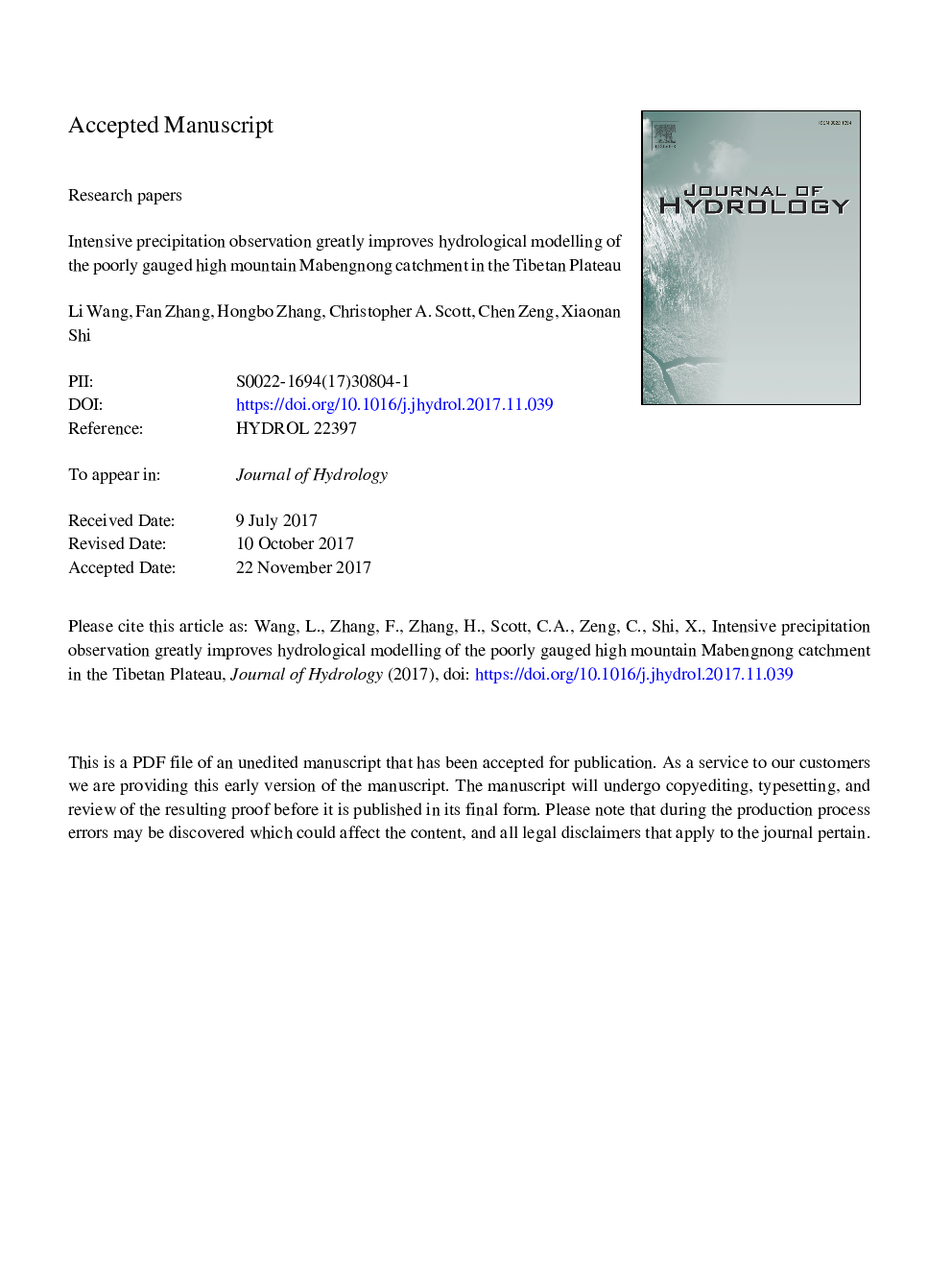| Article ID | Journal | Published Year | Pages | File Type |
|---|---|---|---|---|
| 8895150 | Journal of Hydrology | 2018 | 35 Pages |
Abstract
Precipitation is one of the most critical inputs for models used to improve understanding of hydrological processes. In high mountain areas, it is challenging to generate a reliable precipitation data set capturing the spatial and temporal heterogeneity due to the harsh climate, extreme terrain and the lack of observations. This study conducts intensive observation of precipitation in the Mabengnong catchment in the southeast of the Tibetan Plateau during July to August 2013. Because precipitation is greatly influenced by altitude, the observed data are used to characterize the precipitation gradient (PG) and hourly distribution (HD), showing that the average PG is 0.10, 0.28 and 0.26â¯mm/d/100â¯m and the average duration is around 0.1, 0.8 and 5.2â¯h for trace, light and moderate rain, respectively. A distributed biosphere hydrological model based on water and energy budgets with improved physical process for snow (WEB-DHM-S) is applied to simulate the hydrological processes with gridded precipitation data derived from a lower altitude meteorological station and the PG and HD characterized for the study area. The observed runoff, MODIS/Terra snow cover area (SCA) data, and MODIS/Terra land surface temperature (LST) data are used for model calibration and validation. Runoff, SCA and LST simulations all show reasonable results. Sensitivity analyses illustrate that runoff is largely underestimated without considering PG, indicating that short-term intensive precipitation observation has the potential to greatly improve hydrological modelling of poorly gauged high mountain catchments.
Related Topics
Physical Sciences and Engineering
Earth and Planetary Sciences
Earth-Surface Processes
Authors
Li Wang, Fan Zhang, Hongbo Zhang, Christopher A. Scott, Chen Zeng, Xiaonan Shi,
